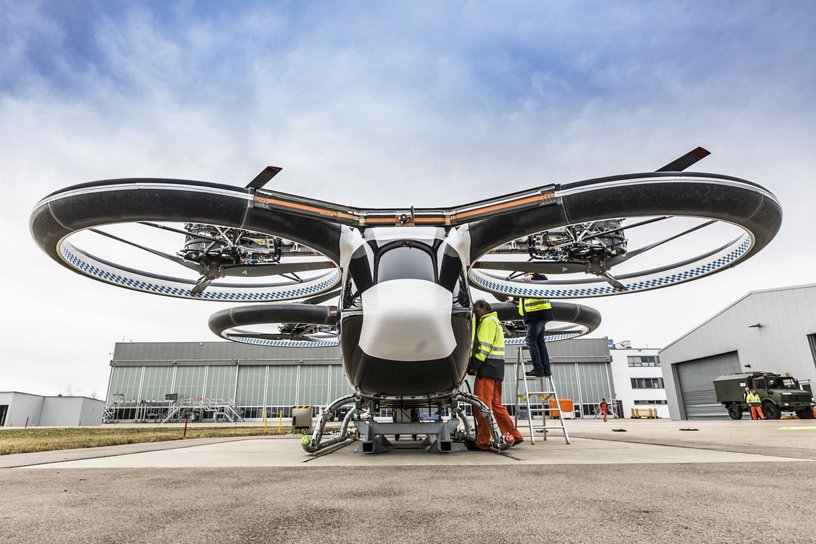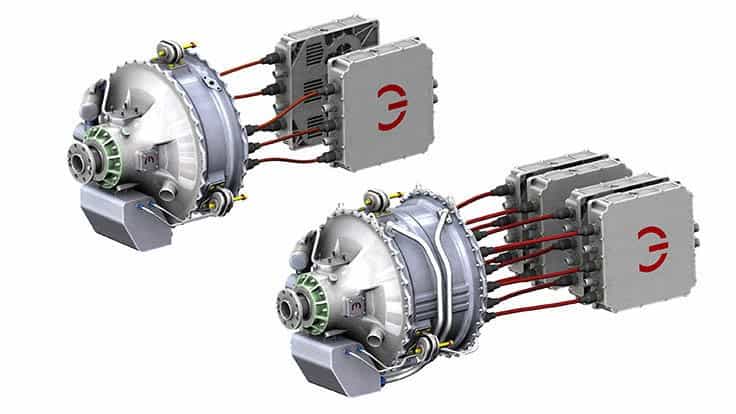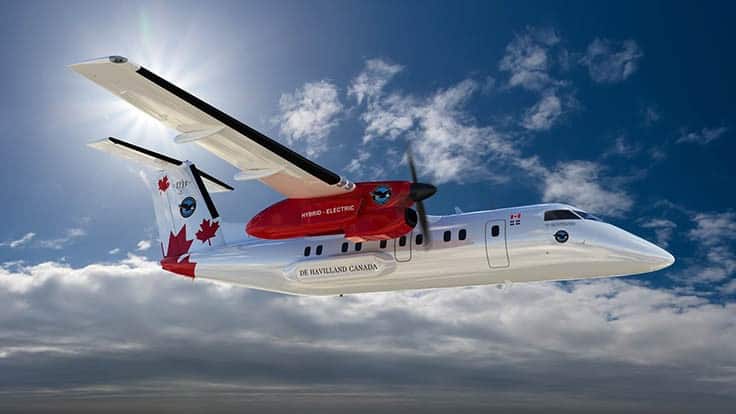Т.е. у этого мотора будет тот же винт, что и на исходной Сесне? И те де RPM?
Установить приложение
How to install the app on iOS
Follow along with the video below to see how to install our site as a web app on your home screen.
Примечание: This feature may not be available in some browsers.
Вы используете устаревший браузер. Этот и другие сайты могут отображаться в нем неправильно.
Необходимо обновить браузер или попробовать использовать другой.
Необходимо обновить браузер или попробовать использовать другой.
Электроавиация
Реклама
Насколько можно понять из статьи, да. Купят 150 обычных самолетов и заменят силовую установку. И это подается как готовый бизнес-план, а не как будущая экспериментальная разработка.
И обойдутся при этом без летных испытаний?Насколько можно понять из статьи, да. Купят 150 обычных самолетов и заменят силовую установку. И это подается как готовый бизнес-план, а не как будущая экспериментальная разработка.
К
На стенде покрутят и всё?
Для сертификации конечно потребуется. Но не будет же такого, что эл.двигатель на земле крутит, а в воздухе отказывается ))).И обойдутся при этом без летных испытаний?
Зачем отказывается?Для сертификации конечно потребуется. Но не будет же такого, что эл.двигатель на земле крутит, а в воздухе отказывается ))).
Он крутит, но по-другому.
И вот, чтобы понять насколько по-другому и нужны ЛИ. Кроме того вопросы охлаждения должны быть решены для всех режимоа полета. Не предлагаете же вы стенд засовывать в аэродинамическую трубу?))
Как раз в полете будет охлаждаться лучше чем на земле. Двигателю хорошо, батарее зимой может быть меньше.вопросы охлаждения должны быть решены для всех режимоа полета.
Почему? Ему только нагрузка интересна.Он крутит, но по-другому.
Это качественная оценка.Как раз в полете будет охлаждаться лучше чем на земле. Двигателю хорошо, батарее зимой может быть меньше.
Испытания позволят определить количественные показатели, размеры радиаторов if any, и проч. и проч. Что дешевле и проще замерить при ЛИ.
Потому, что нагрузка на двигатель меняется от скоростного напора. А он зваисит от скорости т плотности воздуха, которая меняется с высотой.Почему? Ему только нагрузка интересна.
Проще и дешевле это на ЛЛ потестить. Для такого формфактора Ил-76 не нужен.
Судя по размаху, они уже уверены в попиле успехе.
Реклама
Ну, судя по Вашему же следующему сообщению, им есть куда стремиться.Судя по размаху...
15-ти минутное катание аж 4-х чудаков усилиями "скромных" 8 х 130 л.с!!!
Низкая энергоэффективность такой схемы, в общем то, очевидна заранее, однако это никого не остановило.
Для сравнения, Ка-18 хватало около 280 л.с., только на "немножко" дольше, дальше и даже быстрее.
При этом у него был меньше взлетный вес.
Да его габариты были немного больше (10х10м против 8х8м у CityAirbus), но вряд ли эта разница существенно отразиться на размерах, необходимых для взлетно-посадочных площадок.

Наверное это с запасом на случай отказа, чтобы и на меньшем числе долететь.8 х 130 л.с!!!
Керосин-с, однако."немножко" дольше, дальше
Так речь не о топливе/двигателе, а о схеме.Керосин-с, однако.
Конечно. Достаточно внимательно ознакомиться с характеристиками этого ЛА. Ёмкость его аккумуляторов соответствует расходу энергии за 15 минут при примерно половинной мощности двигателей. (Это для полета на оптимальной скорости, без особого маневрирования и в спокойной атмосфере.) Большая избыточная мощность двигателей - одна из особенностей таких ЛА. И нужна она, в первую очередь, для обеспечения динамической устойчивости мультикоптера. Это как раз чем работа ВМГ в статике на стенде отличается от работы в реальных условиях.Наверное это с запасом
А почему у них нет небольших рулевых поверхностей, как у вертолетов?нужна она, в первую очередь, для обеспечения динамической устойчивости мультикоптера.
Так это мультикоптер. Выше обсуждали обычный самолет.Это как раз чем работа ВМГ в статике на стенде отличается от работы в реальных условиях
Потому что схема привлекательна именно "простотой механики", когда вся она сведена к нескольким ВМГ, причем с винтами фиксированного шага, которые обеспечивают и подъемную силу, и пропульсивную, и стабилизирующие моменты, и управляющие.А почему у них нет
"Обычный самолет" тоже в полете не статичен, даже на "установившихся" режимах. Все существующие наработки отлажены/проверены для ВМГ с ТВД/ДВС. Электрическая ВМГ, как обект управления, значительно отличается от них по динамическим характеристикам.обычный самолет
Прикрутить электромоторчик к самолетке, абы она просто летала, в общем то несложно. А вот чтобы такая ВМГ была оптимальна для ЛА и такая замена была оправдана, давала какой то эффект, не так просто.
Вообще все это проходили при "электрификации" БПЛА (конечно в меньшем масштабе). У кого то самолетка могла стабильно летать больше часа, когда в массе считалось и 15-20 мин хорошим достижением. У кого то могла только "продемонстрировать" этот час, а в реальной эксплуатации горели двигатели, их регуляторы, "пухли" АКБ и т.д.
А чем неподвижные стабилизаторы хуже сделают? "Дешево, надежно и практично"схема привлекательна именно "простотой механики", когда вся она сведена к нескольким ВМГ
Может на опытный образец просто более качественные комплектующие ставили?в реальной эксплуатации горели двигатели, их регуляторы, "пухли" АКБ и т.д.
Сделайте и продемонстрируйте."Дешево, надежно и практично"
В том то и дело, что эти разные результаты достигались при использовании практически одних и тех же комплектующих.Может на опытный образец...
(По крайней мере одного уровня качества, от производителей одного уровня)
Во всяком случае у тех, кто со стабильными результатами, были вполне доступные комплектующие и даже более скромные ресурсы.
Все определялось умением собрать все это "в одну кучку" с прогнозируемым результатом.
Seerndv
Старожил

The 450shp magni350 EPU (left) and 850shp magni650 EPU.
magniX
magniX unveils two aircraft electric propulsion units
magni350 and magni650 are on the path to FAA certification.
June 22, 2021
Posted by Eric Brothers
magniX has officially unveiled the magni350 and magni650 electric propulsion units (EPUs), the latest advancements of the company's electric flight motors. Based on thousands of ground test and flight hours, the EPUs have been optimized for real-world commercial aviation applications to further accelerate the path to certification for electric aircraft and bring the future of electric aviation closer to reality.
During the past few years, magniX has been powering commercial-grade electric aircraft such as the eBeaver and the eCaravan. Using key learnings from these ongoing flights and robust ground testing, magniX has introduced a series of enhanced features to enable a more simplified, reliable, and convenient adoption of all-electric power.
The 450shp (350kW/1,600N•m)-class magni350 EPU and the larger 850shp (650kW/3,200N•m)-class magni650 EPU share flight-proven solutions and common-core architecture. Both use the new high-performance magniDrive-100, a 170kW inverter/motor controller power electronics unit.
Operating at 2,300rpm or less, the direct-drive EPUs are liquid cooled and designed for 30,000ft altitude in unpressurized environments. Both systems can drive a propeller governor and standard aircraft accessories, all from the front cone of each motor.
"Based on real-world design, build, and operational testing, we're making incredible strides to push the aviation industry forward and accelerate the rate at which aircraft become electric," said magniX CEO Roei Ganzarski. "The magni350 and magni650 EPUs enable affordable, emission-free, and quieter flights to communities around the world in the very near future."
Headquartered in Everett, Washington, magniX offers a range of electric propulsion solutions, including motors and power electronics.
Seerndv
Старожил

P&WC
P&WC plans hybrid-electric propulsion demonstrator
Governments of Canada and Quebec are supporting development of hybrid technology, with flight testing in 2024.
July 16, 2021
Posted by Eric Brothers
Pratt & Whitney Canada (P&WC), a business unit of Pratt & Whitney, a division of Raytheon Technologies Corp., plans to advance its hybrid-electric propulsion technology and flight demonstrator program as part of a $163M CAD [US$129.5M] investment, supported by the governments of Canada and Quebec.
"Pratt & Whitney Canada is proud to be a leader toward ever more sustainable aircraft propulsion technologies and be an integral part of Canada's green recovery plan," said Maria Della Posta, president, Pratt & Whitney Canada. "With a long-time commitment to sustainability and as Canada's top aerospace investor in research & development, having invested $500M CAD [US$397.3M] annually, we are driving economic growth, innovation, and workforce expertise to benefit the environment. Hybrid-electric technology has an important role to play in enabling the next step-change in efficiency for aircraft engines, and we are uniquely positioned to demonstrate this potential."
The new hybrid-electric propulsion technology will drive significant improvements in aircraft efficiency by optimizing performance across the different phases of flight, allowing the demonstrator to target a 30% reduction in fuel burn and CO2 emissions, compared to a modern regional turboprop airliner. P&WC is working with De Havilland Aircraft of Canada Ltd. (De Havilland Canada) to integrate this hybrid-electric technology into a De Havilland Canada Dash 8-100 flight demonstrator. This demonstrator will include an advanced electric motor and controller from Collins Aerospace, also a Raytheon Technologies business.
The Government of Canada's Strategic Innovation Fund is backing the technology demonstrator, which will help put Canada's aerospace industry at the forefront of global efforts to make aviation more sustainable. The Government of Quebec is supporting this project through Investissement Québec and the Ministère de l'Économie et de l'Innovation, as part of an initiative known as, "Aéronef pour la mobilité numérique et verte de demain" (Green and Digital Aircraft of Tomorrow).
Combining advanced technologies developed by P&WC and Collins, this project is a successor to Project 804, launched in 2019 as a joint development program between the two companies. P&WC will target ground testing in 2022, leading to flight testing of the Dash 8-100 demonstrator in 2024.
Developing hybrid-electric propulsion technology is a core element of Pratt & Whitney's strategy to make aviation more sustainable.
"The investments announced today will help the aerospace sector increase its research and development efforts so that innovative, greener, more sustainable aircraft can be built right here in Canada for decades to come, creating good jobs for hard-working Canadians," said the Hon. François-Philippe Champagne, Canada's Minister of Innovation, Science and Industry.
Реклама

Все самое интересное из мира IT-индустрии
Самые интересные и оперативные новости из мира высоких технологий. На нашем портале - все о компьютерном железе, гаджетах, ноутбуках и других цифровых устройствах. А также обзоры новых игр, достижения современной науки и самые любопытные онлайн-проекты.
 3dnews.ru
3dnews.ru
Поделиться:

 Posted by Eric Brothers
Posted by Eric Brothers